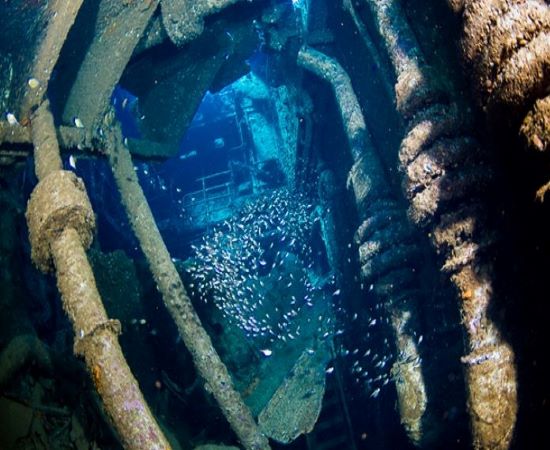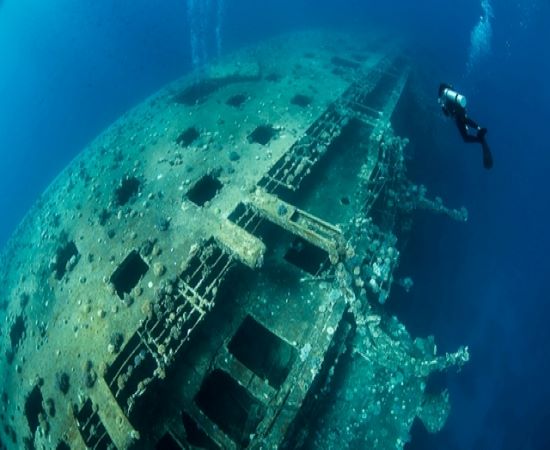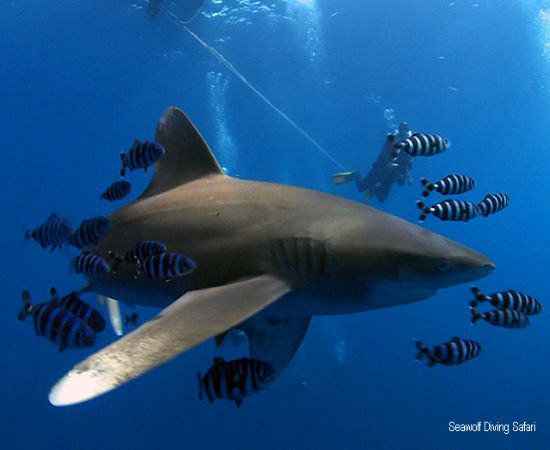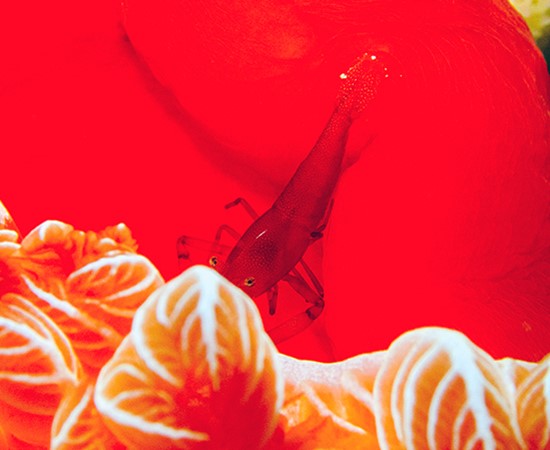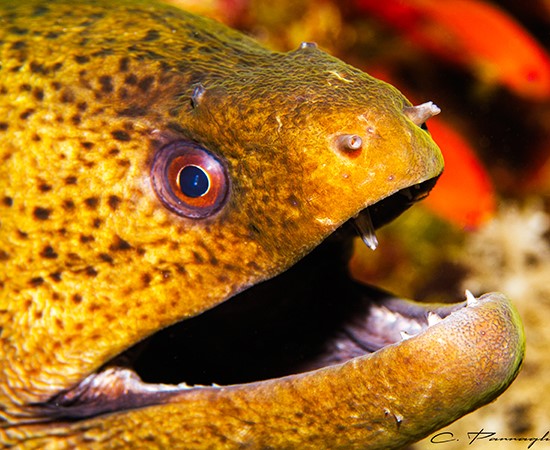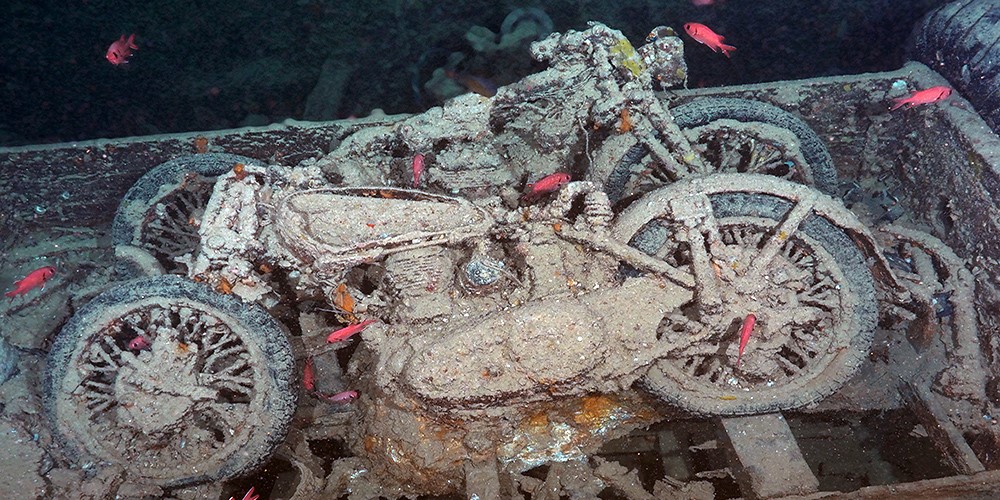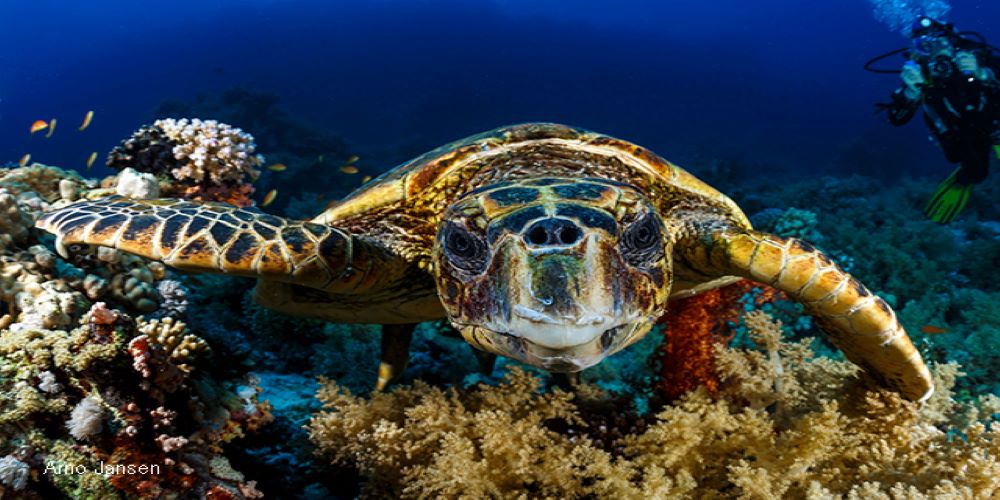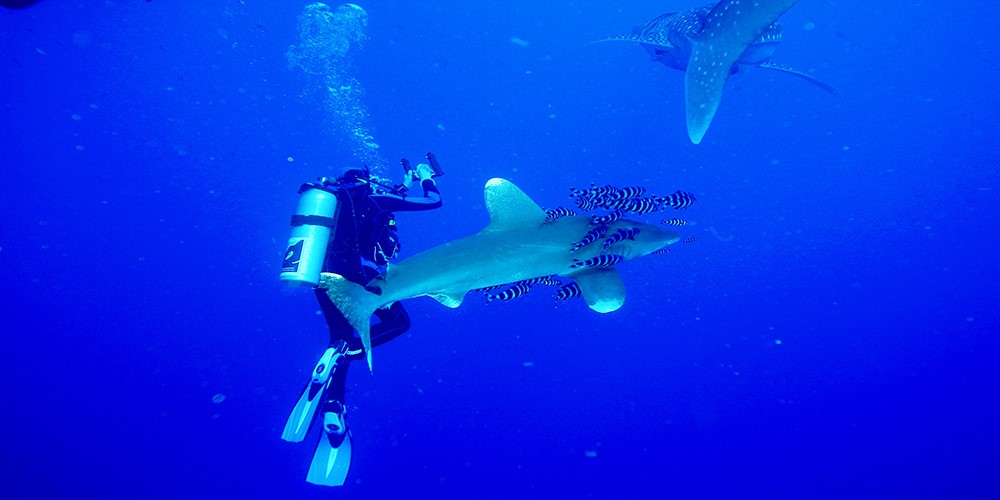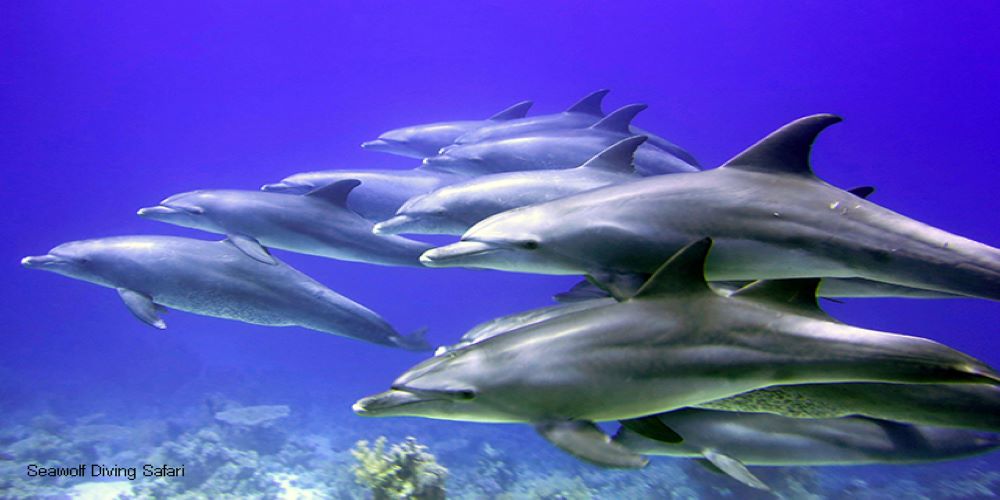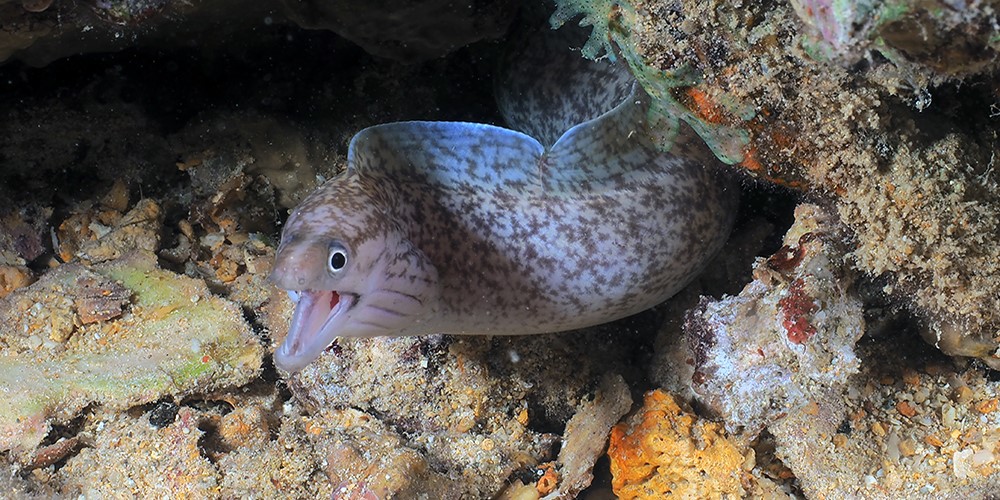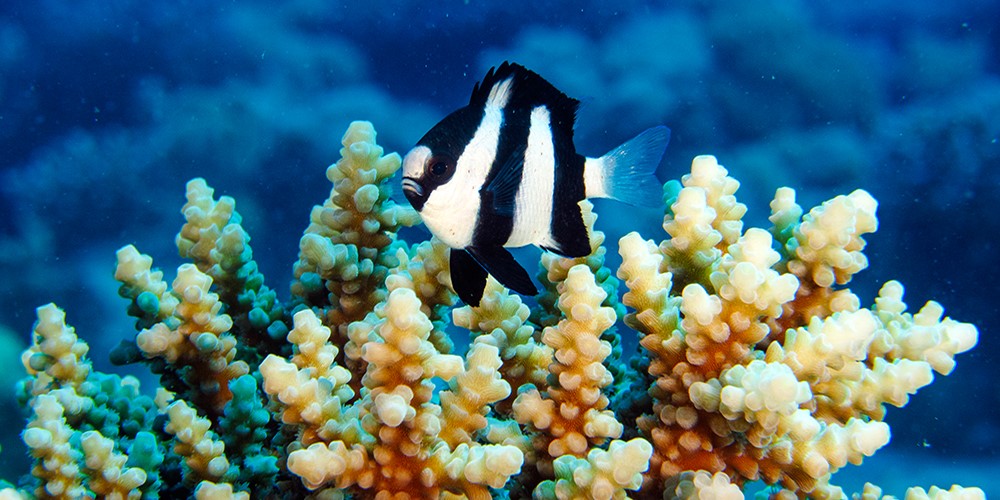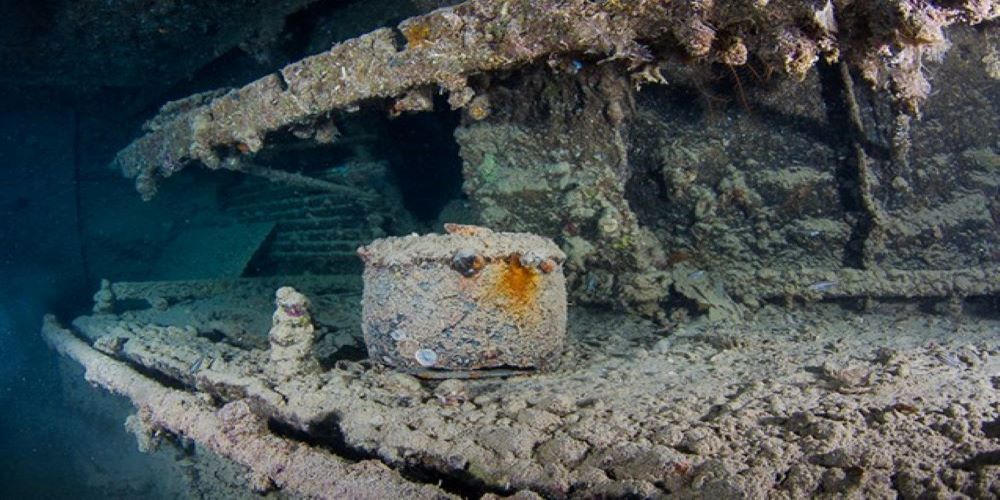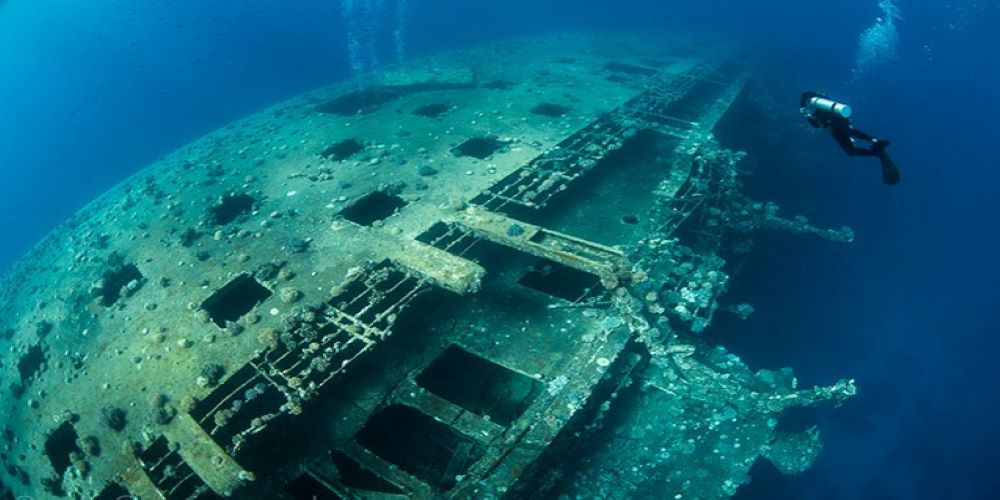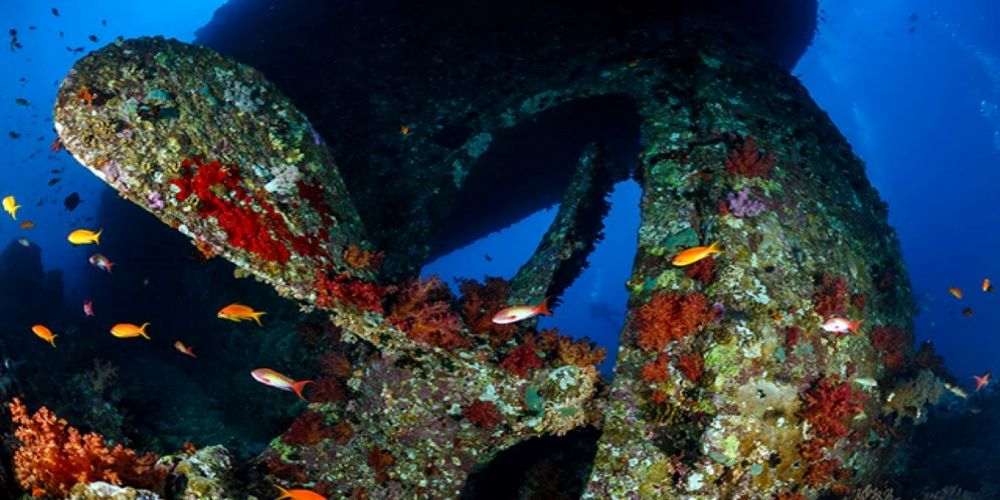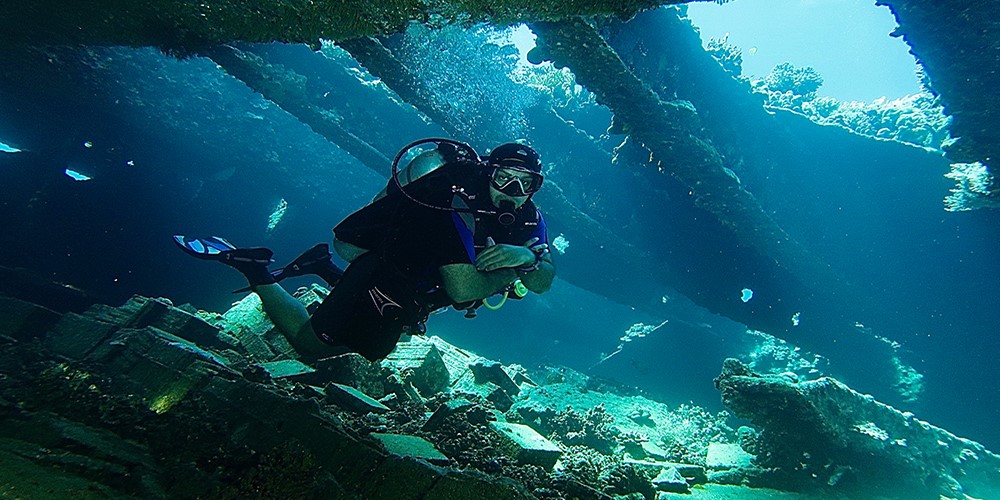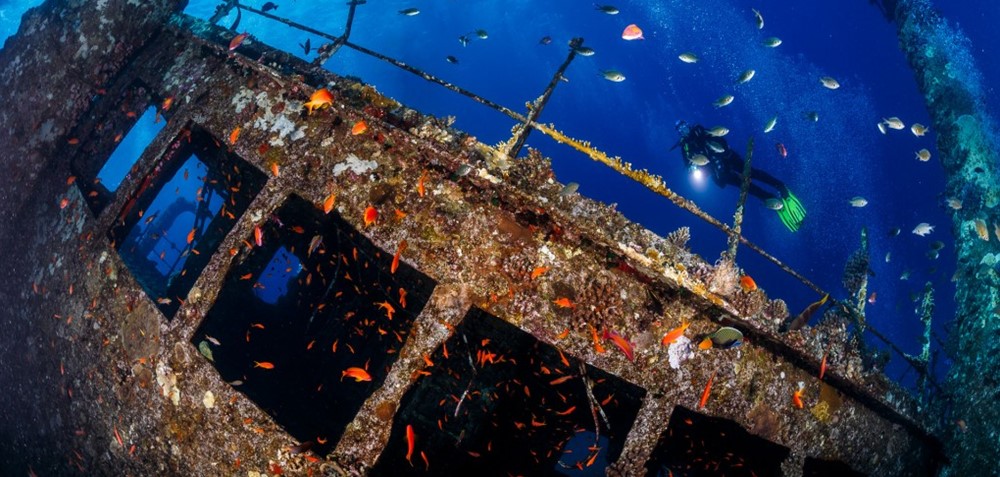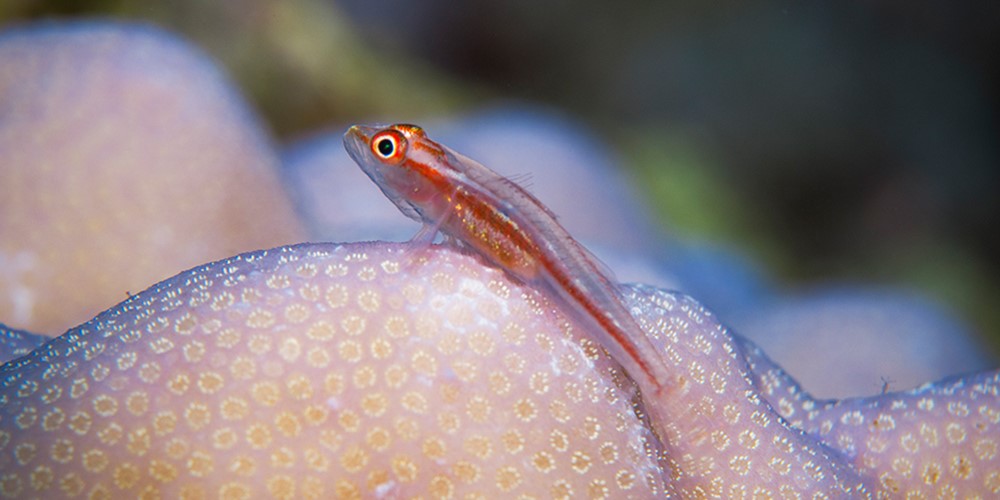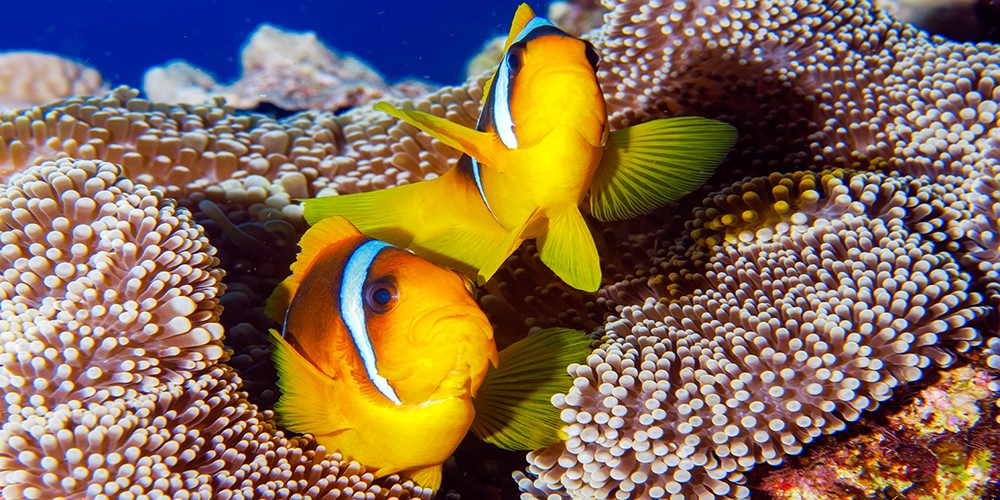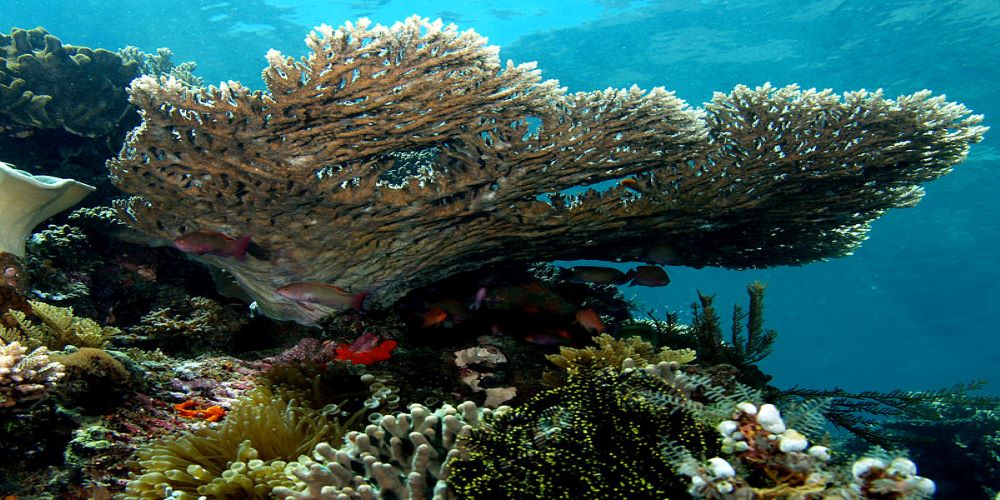Red Sea Classic
- On this tour there is something for "every taste". Beautiful reefs and interesting wrecks are on the program.
- Both experienced and less experienced divers will get their money's worth on this tour.
- After the start in our marina we first head north to Shaab el Erg, then we dive 2 or 3 wrecks at Abu Nuhas.
- We continue towards Sinai to the famous Thistlegorm. On the way we will pass Gubal and Siyoul to see some great reefs and explore the underwater world at night.
- On our way south we will visit the Salem Express ferry, which sank in 1991, and for a change we will see beautiful reefs like the famous Panorama Reef. At the end of the tour, Elphinstone with its oceanic white tip and hammerhead sharks and impressive steep walls awaits us as a "highlight".
SS Thistlegorm
The English ship was on her way to Egypt to supply the English Africa Corps with supplies when she was attacked by a German bomber on 6.10.1941 and sank.
The wreck lies upright on the seabed at a depth of 30 meters.
The cargo is especially interesting: tanks, trucks, weapons, motorcycles, railroad cars as well as a locomotive.
The Thistlegorm is a must for every Red Sea diver. She is a delight for wreck enthusiasts, not to mention her spectacular cargo.
But she also offers a variety of fish. Schools of barracudas or big tunas and snappers are not uncommon here. As an artificial reef, it also attracts countless coral fish.
Abu Dabab
A unique structure makes this reef so remarkable: there are notches and small caves, also a stunning coral garden. All kinds of emperor and banner fish are at home here, but also reef sharks. Due to its location and its maximum depth of 16m, Abu Dabab I is excellent for relaxed day and exciting night dives.
In the south, almost exactly in the middle, there is a single block. There you will see bright red lionfish, as well as feather stars and at night basket stars. In addition, dolphins keep passing by in the south. In the southeast there is another collection of ergs with soft and hard corals, around which there are occasional hawksbill turtles and sharks.
To the north is the famous "Heaven one". Many stories are told around this wreck. Not far away you will find anemone colonies and a cave system overgrown with ancient corals, before diving into two lagoons on the west side with mighty corals and schools of barbels and snappers.
On the west side, an ancient coral formation stretches south with some boulders where reef sharks like to sleep. At the edge of the reef you can find remains of amphorae.
Elphinstone
From Marsa Alam the boat goes about one and a half hours north to Elphinstone Reef! The reef top of Elphinstone Reef lies at a depth of between one and three meters, depending on the water level. Strong surface currents and lots of boat traffic make snorkeling here impossible.
Divers, however, can dive right into a challenging treat! The reef is known for its exceptional biodiversity and, of course, sightings of large fish. In the north we dive on a sloping plateau from 18 to 40 meters and in the south on the underwater terraces. The west and east walls drop off steeply into the depths. The Elphinstone reef has a total length of about 600 meters and a width of 70 meters.
In large numbers we can see hard and soft corals in all colors. In addition, there are turtles, moray eels, loceanic white tip sharks, hammerhead sharks and pretty much everything that the Red Sea has to offer.
Shaab el Erg
Shaab el Erg is an extensive reef, in the shape of a horseshoe. This formation is open to the south with a shallow lagoon, which is full of ergs. The whole lagoon can be dived.
Very popular are the northern tip, the eastern wall or the southwestern tip - Gota Shaab el Erg.
Bluff Point
This dive starts at the northeasternmost point of the tip and then follows the coral wall diving south to the arched bay, the north side of Little Gubal Island. A strong current pushes the diver in a southerly direction, so it is best to stay as close to the wall as possible.
Along the rounded tip where the dive begins, large Napoleon wrasse can be encountered and often turtles.
Siyoul Soraya
It's a fantastic, colorful dive, where you can discover all kind of reef fishes of the Red Sea.
Rosalie Moller
Due to the mostly prevailing north current there, she was lying almost exactly with her bow aligned to the north on the port anchor. The attack must have come very unexpectedly on the unarmed coal freighter.
A bomb hit on the starboard side at the level of the rear hold caused the ship to sink rapidly. Today, the Rosalie Moller stands upright in a north-south direction on her keel, which lies at 50m on a firm sandy bottom.
The Rosalie Moller is a unique experience, even if the visibility at the wreck is often very poor (for the conditions in the Red Sea), not only due to the depth (the upper deck is at 30m).
It is certainly not suitable for beginners, as every dive goes hard to the DEKO limits and the ascend on the rope is a conditioning exercise with the often prevailing swell and current.
Salem Express
It was a tragic navigation error that caused the sinking of the Salem Express. The ship was coming from Jeddah in Saudi Arabia and was heading for the port of Safaga. Only eleven kilometers from the destination port, the ferry ran full speed into the westernmost coral block from Hyndman Reef.
A 10-meter hole had been torn in the forward part of the hull, causing the ship's huge bow hatch to burst open. Enormous amounts of water entered through these two openings and it sank in just a few minutes. Of the 690 passengers officially listed, only 180 survived the accident.
Abu Nuhas / Carnatic
The Carnatic, on a voyage from Liverpool to Bombay with 27 crew, 203 passengers, and a cargo of cotton, copper plates, and 40,000 pounds sterling in gold, ran aground on the reef Shab Abu Nuhas on the night of September 13, 1869. The ship initially remained on the reef, but broke apart and sank on September 15, despite various rescue attempts .
Overconfidence in the ship's stability had a disastrous effect. Since the Carnatic had not been cleared and passengers and crew members were on board, the ship took 27 people down with it . The survivors first rescued themselves on Shadwan Island and were later recovered by the Sumatra.
In October 1869, a helmet diver recovered most of the gold cargo as well as 700 copper plates. Several bodies were also discovered - one victim was still stuck in a porthole through which he had tried unsuccessfully to escape. 8,000 pounds sterling could still be in the wreck. No one has found them yet - perhaps they were secretly salvaged or disappeared under coral.
The wreck was rediscovered in 1984 and has been a popular destination for Hurghada dive boats ever since. Since then, souvenir hunters have plundered it thoroughly. The Carnatic lies on its side at the base of the reef at a depth of 20 to 27 meters. In the middle the ship is badly damaged, bow and stern are well preserved. The wooden decks have rotted away so that it is safe to enter the interior. The hull is densely covered with stone and leather corals.
Abu Nuhas / Chrisoula
After several previous owners, she finally changed to the shipping company Clarion Marine and was given the name Chrisoula K. Under this name she also made her last voyage, which took her to the area of the Abu Nuhas reef in the Red Sea on August 30, 1981 with a cargo of cheap Italian floor tiles.
Due to a navigational error by the captain, the ship ran aground on the reef during the night of August 30 and sank.
Today the wreck lies in an optimal position for divers at a depth between 5 meters and a maximum of 25 meters.
The ship is in a slight inclination, the middle part is heavily damaged by the impact.
Abu Nuhas / Ghiannis
For a long time the front half, which had run up on the reef, remained stationary and indicated the place of the accident, then it too sank and lay down on the port side.
The aft half of the wreck lies somewhat inclined on the port side. Above the front of the quarterdeck rises the smokestack with the large letters "D". The "D" stands for the name of the shipping company: Danae.
In front of the chimney is the bridge deck, behind it other spaces, a huge winch, the bollards, the intact railing, and even the frame that used to support a large awning was not damaged in the sinking.
At the base of the funnel are narrow portholes leading into the engine room. The engines are an impressive sight with their long rows of cam arms, valves and pipes.
The middle section of the ship resembles a junkyard, as iron girders are bent and torn, and the sides lie collapsed on the seabed. This area of the wreck is teeming with crocodile fish, scorpion fish and parrot fish. Some groupers have also made their home here.
Shaab Sheer
The north side of "Shaab Sheer" is a bit more turbulent, but the south side is like a lagoon and is usually very well protected. We have to reckon with the strongest current on the west side, which faces the "South Safaga Channel". Most divers appreciate the area between three and 15 metres depth because of the quasi "moonscape" of the brain coral garden, nevertheless we find many different reef inhabitants at "Shaab Sheer".
Picasso triggerfish, orange-striped and yellow-fringed triggerfish, parrotfish, pencil filefish and sling jaw wrasses can be found here in masses. In the area of the northern plateau and at the steep wall we can also see bream, bigeye empereor, mackerel, red and black snapper as well as schools of tuna and barracuda.
Panorama Reef
The east and west sides of Panorama Reef drop off steeply, but to the north and south we find very interesting plateaus with lots of life and, how could it be otherwise, a panorama of a special kind. We see nose doctor fish, barracudas, fathead mackerels, moray eels, crocodile fish, eagle rays, napoleons and turtles.
Great mountain corals, large table corals and thousands of anthias can be found on the northern plateau of Panorama Reef. The current is 95 per cent from the north, which means it's often quite "stormy" here. The southern plateau is more protected, starting at a depth of 18 metres and slowly dropping to 30 metres. Here, huge gorgonians grow above the chimney. A large anemone field is just as much a part of it as the almost obligatory sighting of stonefish.
Ras Abu Soma
"Ras", meaning the "head" of Abu Soma, is a drop off wall that descends into the depths at this reef at the northern end of Safaga Bay. At a depth of about 25 meters we find a plateau with many different corals, mainly table and hard corals.
In the blue water the chances of seeing barracudas, mackerels, snappers, tunas and bat- and surgeon fish are good. From time to time at "Ras Abu Soma" even grey reef sharks or whitetip reef sharks are sighted as well as leopard or hammerhead sharks, stingrays, guitarfish or eagle rays and in spring also manta rays.
On the plateau, however, we always find interesting reef inhabitants, such as moray eels, octopuses or cuttlefish on the reef slope and clownfish in their anemones. Further south is "Ras Abu Soma Garden", a great coral garden that turtles and milkfish also love.
Itinerary
ATTENTION: The tour description is only a suggestion. Which dive sites are dived on the tour depends on many factors, including wind and weather.
Arrival
After arrival in Hurghada or Marsa Alam transfer to the boat.
Check in, dinner and spending the first night onboard in the marina.
Departure
Departure in the morning to Umm Gamar
Familiarization of the boat,
Diving, safety and equipment briefing.
Two dives Umm Gamar and Siyoul Island
Night dive at Beacon Rock
Dunraven
Dive at Dunraven
Two dives at Thistlegorm
Night dive
Thistlegorm
Dive at the Thistlegorm
Dive at Small Gubal Island
Dive at Ghiannis D.
Night dive at Abu Nuhas
Abu Nuhas
Dives at Abu Nuhas
Night dive
Panorama Reef
Dives at Panorama reef,
Salem Epress
Night dive
Return
Dive at Elphinstone reef and Marsa Shona
Return to the port.
For safety reasons you should not dive 24 hours before your flight home.
Check out
Breakfast and check out no later than 10 am.
Transfer to the airport or hotel.

 ENGLISH
ENGLISH
 РУССКИЙ
РУССКИЙ
 DEUTSCH
DEUTSCH

